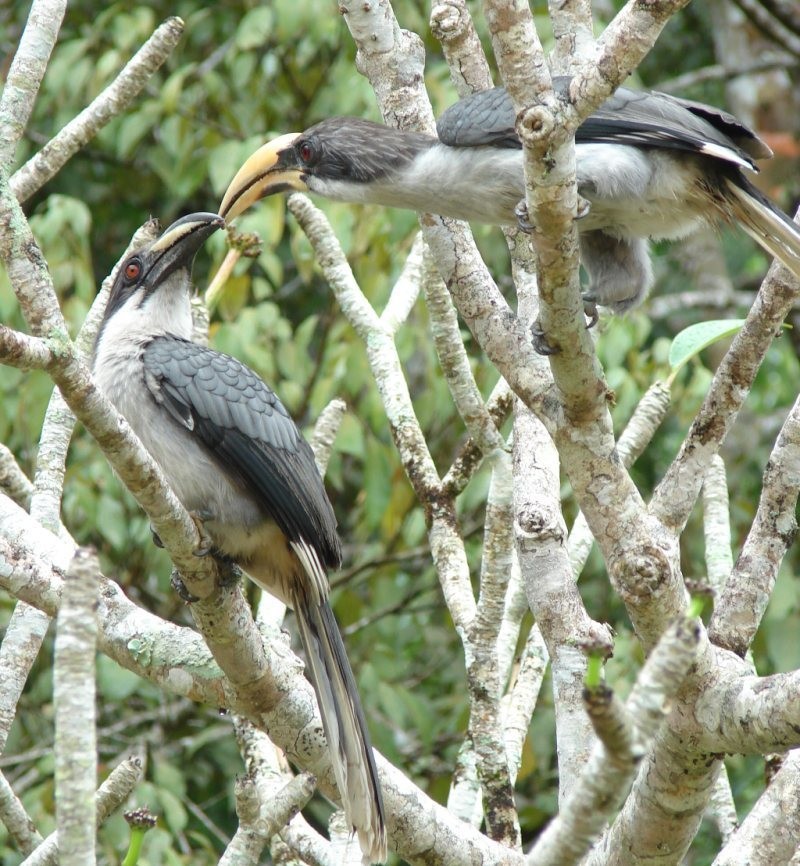Sri Lanka Grey Hornbill
A species of South Asian Gray Hornbills, Also known as Ceylon Grey Hornbill Scientific name : Ocyceros gingalensis Genus : South Asian Gray Hornbills
Sri Lanka Grey Hornbill, A species of South Asian Gray Hornbills
Also known as:
Ceylon Grey Hornbill
Botanical name: Ocyceros gingalensis
Genus: South Asian Gray Hornbills
Content
Description General Info
 Photo By pieterprins , used under CC-BY-NC-4.0 /Cropped and compressed from original
Photo By pieterprins , used under CC-BY-NC-4.0 /Cropped and compressed from original Description
The Sri Lanka grey hornbill is a large bird at 45 centimetres (18 in) in length. It has grey wings with black primary flight feathers, a grey back, and a brown crown. Its long tail is blackish with white sides, and the underparts are white. The long, curved bill has no casque. Sexes are similar, although the male has a cream-coloured bill, whereas the female's is black with a cream stripe. Immature birds have dark grey upperparts, a cream bill, and a tail with a white tip. Its flight is slow and powerful. 
Size
45 cm
Nest Placement
Cavity
Feeding Habits
Sri Lanka Grey Hornbill are omnivores, primarily feasting on figs, berries, and other fruits, but also consume insects, small lizards, rodents, and reptiles. They forage predominantly in trees, exhibiting a preference for figs, which constitutes a significant portion of their diet.
Habitat
The sri Lanka Grey Hornbill primarily inhabits evergreen forests and deciduous woodlands, particularly regions abound with dense creepers. Its preference extends to plantation areas and expansive gardens, demonstrating some level of adaptability to human-altered landscapes. This species is typically found at elevations up to 1200 meters, which allows for a broad distribution within suitable habitats across subtropical or tropical climate zones.
Dite type
Frugivorous
General Info
Feeding Habits
Bird food type

Fruit
Behavior
The female lays up to four white eggs in a tree hole blocked off during incubation with a cement made of mud, droppings and fruit pulp. There is only one narrow aperture, barely wide enough for the male to transfer food to the mother and chicks. These birds usually live in pairs or small flocks consisting up to five birds (2 adults and 2-3 juveniles). 